Motorsports
Yamaha still not a match for my riding style
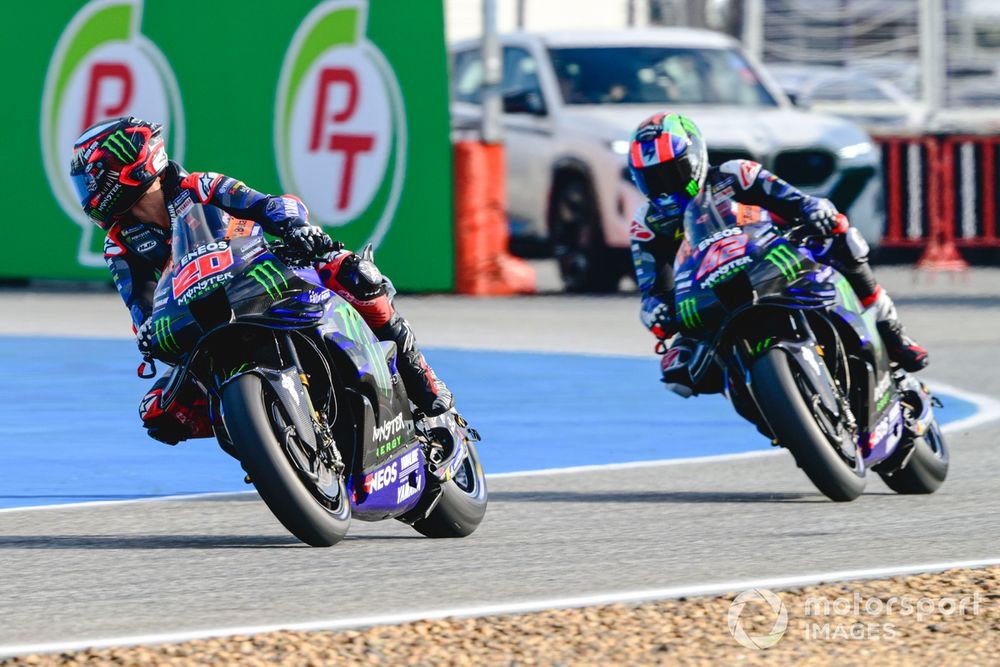
Alex Rins says he is still struggling to adapt his riding style to the Yamaha M1 package and feels he cannot simply copy Fabio Quartararo’s efforts in MotoGP.
With Rins approaching the conclusion of his maiden premier class campaign with the Japanese manufacturer, he has consistently been unable to match team-mate Quartararo’s performances and results.
That has continued in Thailand, with Quartararo ending Friday 12th overall and Rins down in 18th, with almost half a second splitting them on single-lap pace.
After a 2023 MotoGP season blighted by injury, Rins’ switch from Honda to Yamaha has seen him struggle to get back to the form that had him score five victories with Suzuki, along with his sole triumph for Honda in the United States last year.
While Rins’ arrival coincided with Yamaha’s ongoing difficulty in extracting more performance from the M1 package, the Spaniard – who has a best result of ninth place in Aragon this season – feels he still doesn’t have a bike to suit his riding style.
“Every time I come back from the track I try to give good feedback, I still do not feel that they have given me a bike that resembles my riding style,” he commented after Friday practice for the Thailand Grand Prix.
Fabio Quartararo, Yamaha Factory Racing
Photo by: Gold and Goose / Motorsport Images

Rins feels he simply cannot copy Quartararo’s riding style and that it wouldn’t be a fruitful pursuit regardless, given the French rider is also unable to be competitive at the sharp end of the grid.
“I cannot copy Fabio’s bike, I do not have his riding style,” he added. “When I come back from the track the feedback I give is the best I know. In the end there are no bad people here in MotoGP, Yamaha is a factory team that has the best people.
“Obviously he is going through a tough time, but Fabio has won a championship and many races with this bike, and now he is not achieving it, and there is a reason for that.
“We are in a period of quite a bit of stress, of evolution and maybe that is what we have to go through now.”
Motorsports
Russell tops FP1 as Albon and Bearman crash
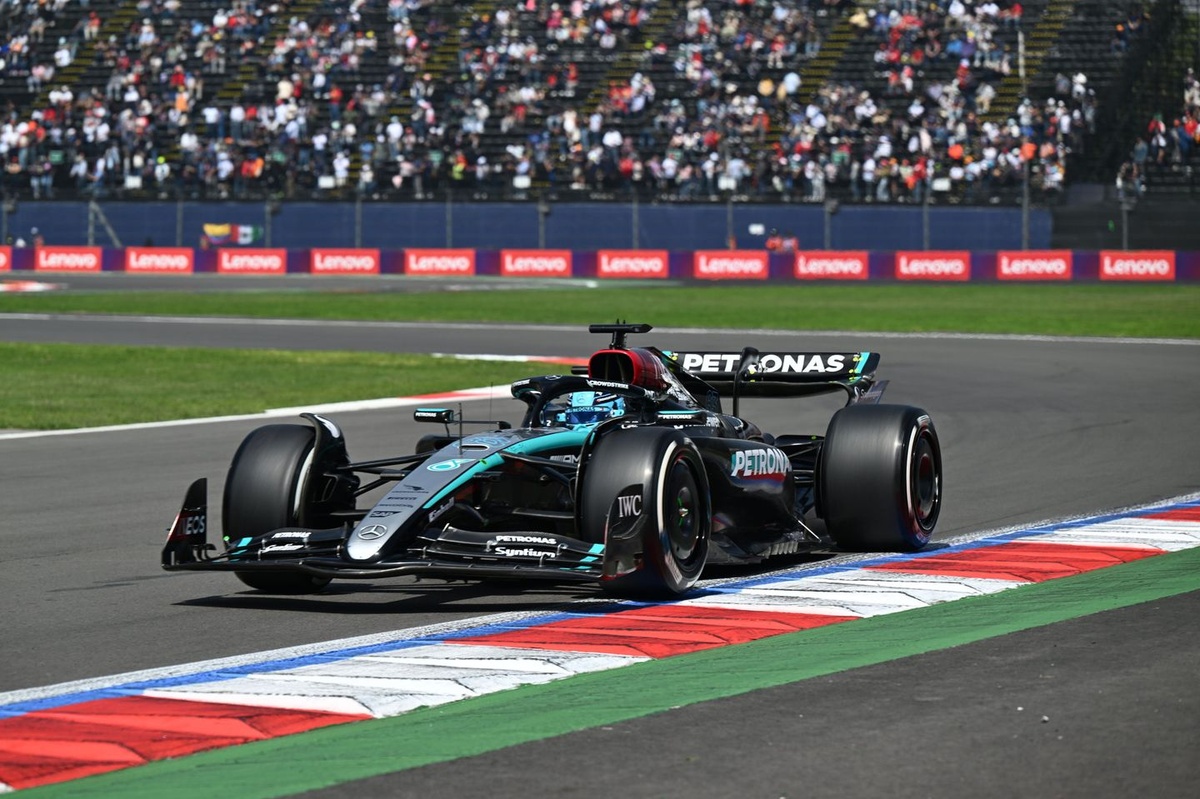

George Russell went quickest in a twice red-flagged opening practice session at the Mexican Grand Prix, as Alex Albon and Oliver Bearman collided at Turn 9.
Russell set a 1m17.998s on the soft-tyre runs to go three tenths faster than Ferrari’s Carlos Sainz in a stop-start session, with the first interruption coming five minutes in to clear a sliver of debris sat ahead of Turn 1.
Both Albon and Bearman were involved in the second; the Williams driver was on a push lap and caught a slowing Bearman at Turn 9 and lifted off, which caused his car to snap – he clipped the Ferrari reserve driver and went straight on into the wall.
The second red flag produced a 14-minute delay, and practice resumed with 24 minutes left on the clock.
Sainz had led the way after the opening runs on the hard tyre ahead of the second pause and then continued to headline the session on the soft tyre as he set a 1m18.573s lap to kick off the first performance runs of the weekend.
Russell found almost six tenths over the Spaniard to go faster, breaking into the 1m17s in the process, although Sainz got closer with a follow-up 1m18.315s time to close the gap.
RB’s Yuki Tsunoda was third fastest in a jumbled order, 0.7 seconds off the pace, while Max Verstappen was a further tenth-and-a-half behind.
The Dutchman reported over the radio that he was suffering with a power unit issue, and slowly made his way back to the pits with over five minutes remaining and took no further part in the session.
Nico Hulkenberg was fifth fastest over Oscar Piastri, who contended that his McLaren felt ‘pretty terrible’ during his soft-tyre runs and subsequently put together a longer hard-tyre stint to gather further data.
Esteban Ocon was seventh, albeit a second off the pace, ahead of the closely-matched Valtteri Bottas, Liam Lawson, and Sergio Perez.
Future Mercedes driver Andrea Kimi Antonelli enjoyed a longer FP1 session versus his Monza outing, taking Lewis Hamilton’s car to 12th in the order – a tenth behind Franco Colapinto.
Pato O’Ward drove Lando Norris’ car in his home FP1 session and was 13th fastest, while fellow stand-ins Felipe Drugovich (Aston Martin), Robert Shwartzman (Sauber) and Bearman (Ferrari) propped up the order.
Motorsports
What We Learned on Friday! | 2024 #ThaiGP
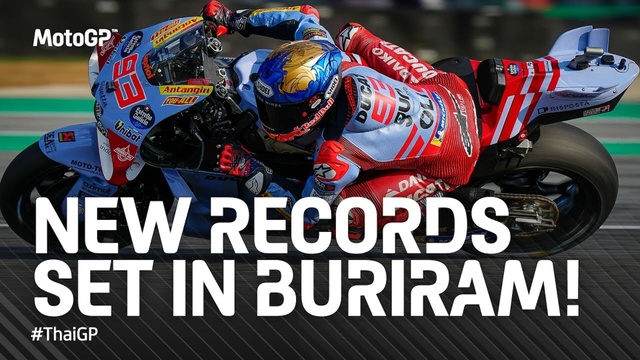
Continue reading with advertising …
… or with a subscription
Visit motorsport.com as usual with advertising and tracking. You can revoke your consent at any time via the data protection page.1
Use motorsport.com without any advertising banners, personalized tracking and commercials for a small fee.
More information about advertising and tracking in our Data protection notice, the List of our partners and in Data protection information center.
Already a subscriber?
Log in here
Motorsports
Why Mexico GP second practice is different to the rest of the F1 season
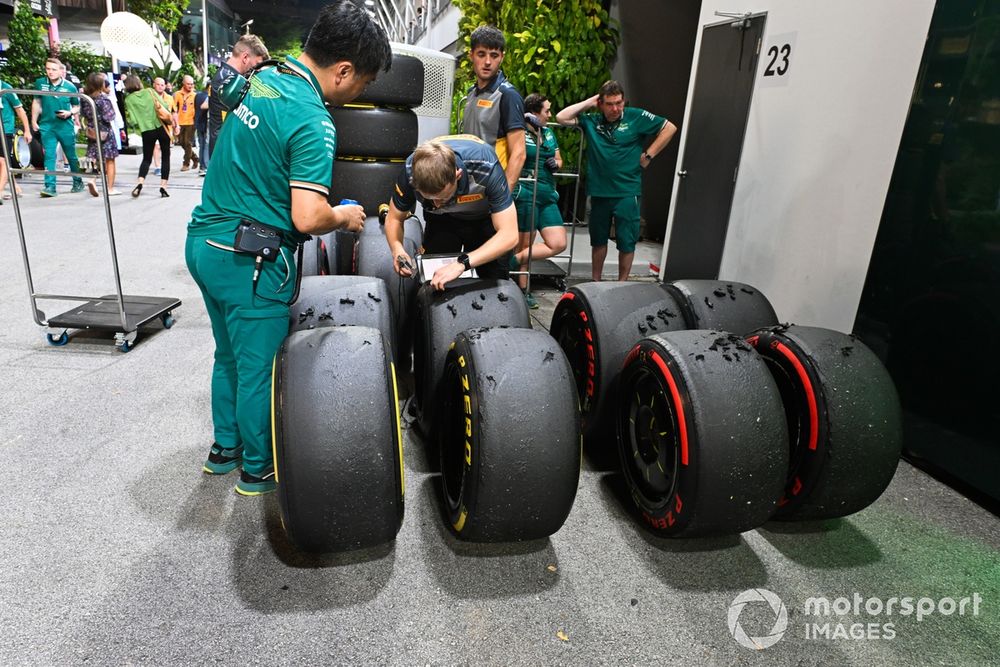
Formula 1 practice at non-sprint weekends is a well-known format – teams have an hour in both FP1 and FP2 on Fridays and then a third 60-minute session on Saturday before qualifying.
But second practice at the Mexico City Grand Prix will take on a different format as Pirelli conducts a vital test ahead of its 2025 tyre compound homologation.
The change mirrors the one made for last year’s event, where the Italian manufacturer trialled a prototype C4 compound ahead of the current campaign.
Pirelli needs real working data when finalising its homologation ahead of the new season, which will again see F1 travel to 24 destinations across the globe, and with a lack of in-season testing time, this weekend’s practice session has been earmarked as a chance to gather information.
As explained by Pirelli, the session will be “entirely given over to validating” the tyre range’s softest compounds for next year: the C4, C5 and C6 compounds.
To facilitate the test, FP2 will be extended to 90 minutes, with all drivers and teams obliged to follow a run plan established by Pirelli’s engineers.
Engineers from Aston Martin and Pirelli check the Medium and Soft tyres
Photo by: Mark Sutton / Motorsport Images

So, in addition to the usual dry tyre allocation for the grand prix weekend, drivers will be given two more sets of tyres. One will be a test control tyre – i.e. the same compound as the soft in the normal allocation – and the other will be a 2025 prototype, which Pirelli has confirmed was homologated in September.
The specified programmes will include a qualifying simulation run and a race simulation run, with “every team running the same number of laps with the same quantity of fuel onboard” – dependent on which run type is being performed.
These tyre sets will be identifiable as they will not run with coloured sidewalls.
A complication for the test is that some contracted race drivers will be making way for rookies to complete one of the regulation-mandated rookie runs in FP1, with a lack of on-track time compared to rivals potentially putting those that stepped aside at a disadvantage.
Pirelli has counteracted this by handing those affected an additional set of medium compound tyres for FP2 and allow them 30 minutes of ‘free’ running, thus only obliged to complete 60 minutes of tyre testing.
Data from the test will be analysed before the post-season group tyre test, which will take place at the Yas Marina Circuit in Abu Dhabi.
With what is essentially only two hours of running to gather race-representative data, teams will face a similar engineering challenge to that of a sprint weekend, albeit with slight respite from the extra practice session before parc ferme is locked in.
Why has Pirelli chosen Mexico?
While you would expect the extra time to be a profit for teams and drivers for the weekend, it actually doesn’t work out that way for everyone given the requirements of the test.
As Haas driver Nico Hulkenberg’s race engineer Gary Gannon told Motorsport.com, drivers must not get suckered into changing the balance of the car off the back of running on the prototype tyres.
Gannon also pointed out there was no advantage from running two contracted racers in FP1 over those testing rookies, explaining: “If you are not running a young driver in FP1, you are not able to utilise the extra time, so for us, running two racing drivers in FP1, in FP2 we are only doing the Pirelli tyre test programme.
“So FP2 is lost in terms of our understanding and use for the race weekend, so we have to do all of our kind of Friday learning in FP1.”
The Autodromo Hermanos Rodriguez is an outlier on the F1 calendar due to its track layout and high altitude, which would suggest it as a strange option for a tyre test.
But this is exactly why it has been chosen and Gannon added: “Pirelli’s tyres need to work in all conditions, so it is particularly important to find out if they are particularly weak… they may have a compound that works great at Barcelona where there is a lot of tyre energy and the tyres work because you are always pushing them.
“Here is one of the extreme cases and so we have a good baseline, we have the baseline tyre and we have the morning running so they will know what the grip should feel like. Also, the track improves a lot in FP1, that’s why you do the test in FP2, because if you try to do the test out of the box in FP1, the track is changing very dramatically as it gets cleaned up and rubbered in.
“In FP2, the conditions are very stable, so you can find out if this new compound or new construction they have come up with has some weakness on very low grip or smooth tarmac surfaces.
“So they need to be trying all these outlier circuits because that’s where you will have a miserable weekend if you deliver tyres that only work in low-downforce, for example.”
Motorsports
McLaren finally unleashes long-awaited floor upgrade at Mexico GP
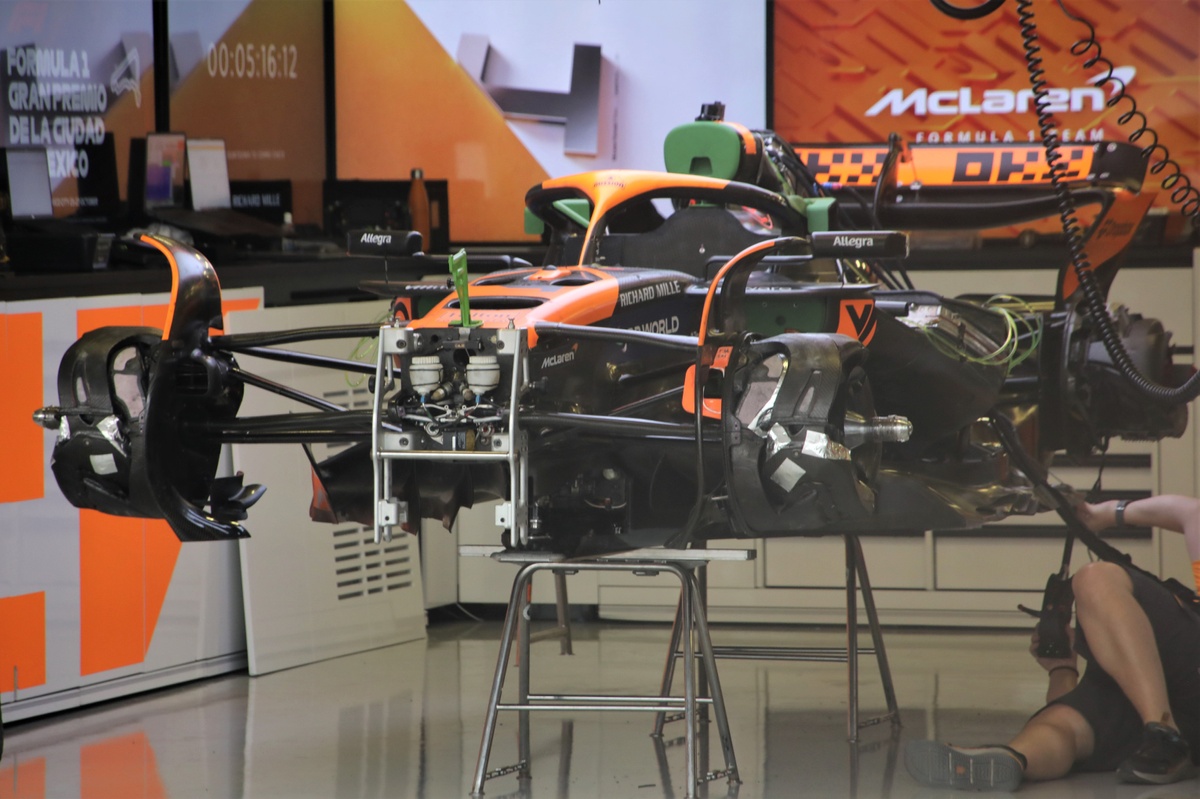

McLaren has finally unleashed its long-awaited floor upgrade for its 2024 Formula 1 car, with what the team calls a “heavily revised” upgrade fitted for the Mexican Grand Prix.
After rivals Red Bull, Aston Martin, Ferrari and Mercedes all encountered issues with new floor developments earlier in the season, McLaren had held off introducing a second major new floor development after the one it successfully introduced in Miami.
In the regular ‘Car Presentation Submissions’ document released by the FIA ahead of each F1 event, McLaren has revealed its revised floor along with two cooling tweaks typical for running in Mexico City’s thin air at high altitude.
“The floor design has been heavily revised, with geometric changes in all areas, resulting in an increase of aerodynamic load across all conditions,” reads McLaren’s explanation of the new floor in the FIA document.
Motorsport.com understands from the team that this is indeed the moment McLaren has been waiting for to introduce its long-awaited floor upgrade, but it is not yet fully confirmed if it will race the part so critical to car performance in the new ground-effect era this weekend or if it is available for both MCL38s.
The team had chosen not to add the new floor in its major upgrade package introduced at Austin, where it had a revised front wing and front suspension package, plus changes to its rear brake duct area and rear wing.
When asked if McLaren should have been more aggressive in adding the floor to its other new parts in Austin, team principal Andrea Stella said last weekend: “If we were in condition to produce them, release them in time to have them in Austin, we would have brought them in Austin.
“The time of new parts and upgrades landing trackside is the natural time of designing, finalising and then producing the new parts.
“I have said before already though that we wanted to make sure that what we bring trackside is well-behaved and we are quite encouraged – and I have to say well done to our aerodynamic team – that the parts we brought [to Austin], they worked as expected.
“And hopefully also that will be the case for the parts coming for Mexico and Brazil.”
Motorsports
Prolific sportscar and Indy 500-winning designer Bill Riley
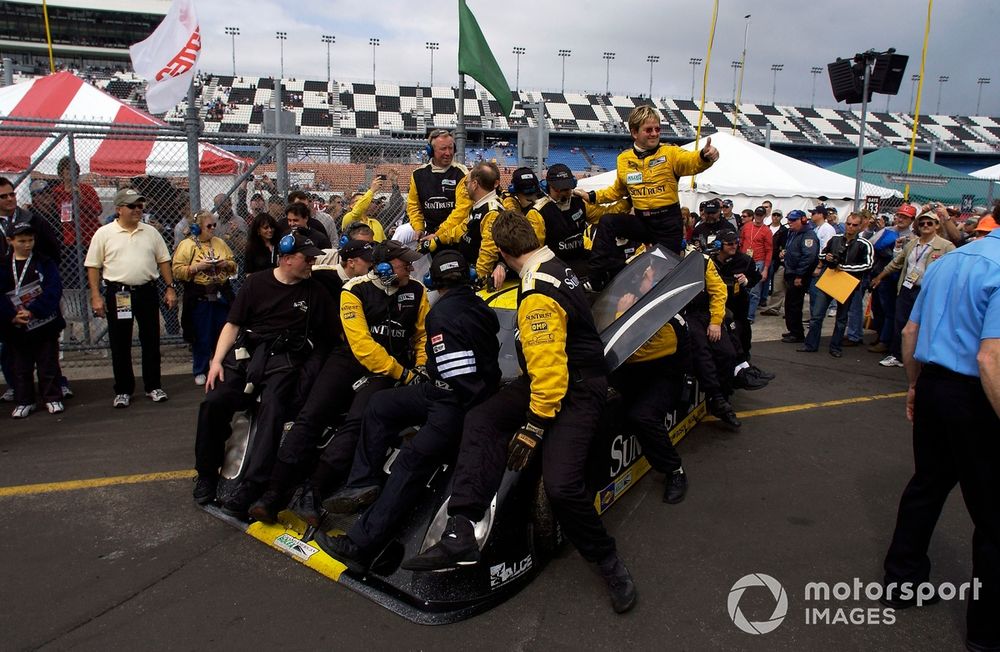
Few racing car designers have enjoyed such long and distinguished careers as Bob Riley. The American, who has died 93, was both prolific and successful in multiple disciplines over the course of more than 60 years at the drawing board.
Riley-designed cars won the Indianapolis 500, the United States Auto Club Champ Car title multiple times and just about everything worth winning in North American endurance racing. Repeatedly! His designs triumphed at the Daytona 24 Hour no fewer than 13 times.
It will be for those successes in sportscar racing that Riley will be best remembered, not just for the sheer number of races and championships won, but because the cars that accrued them carried his name. Riley & Scott took a trio of wins at Daytona in with the MkIII World Sports Car in the second half of the 1990s, while Daytona Prototypes known simply as Rileys took a further 10 in the US endurance classic during the Daytona Prototype era between 2005 and 2015, including eight on the bounce.
The MkIII open-top prototype and the family of Riley DP coupes – the MkXI, the MKXX and MkXXVI – (both spaceframe chassis designed together with son Bill) were serial championship winners. Drivers of the former took a total of eight titles on the original IMSA trail (subsequently known Professional Sportscar Racing), in the United States Racing Racing Championship, the American Le Mans Series and the Grand American Road Racing Series. The line of DPs took the Grand Am crown nine times.
“Just about everything I drove designed by Bob was incredible,” says Wayne Taylor, who won Daytona with both the MkIII and the MkXI, as well as the IMSA and Grand-Am titles with each car. “With a Riley chassis I knew that I was going to be in a position to win races and championships.
“Bob understood what was required for racing on the rough tracks in North America; he understood that you need mechanical grip. His cars were always easy to drive. That was always the big thing about a Riley.
Wayne Taylor, pictured with his team after winning the 2005 Daytona 24 Hours, enjoyed enormous success in Riley cars
Photo by: F. Peirce Williams / Motorsport Images

“He played a massive role in my career going all the way back to the Intrepid GTP I raced at the start of the 1990s. I have a lot to thank him for.”
Riley’s successes in single-seaters came as a hired hand. He started working for US racing legend AJ Foyt for the 1971 season, designing the Coyote with which his employer took third place at Indy that year. An evolution of the car Riley conceived for ’73 would give Foyt his fourth and final victory at the Brickyard in 1977.
By then, Riley had moved over to work for Pat Patrick. He would design a quartet of Wildcats for him, though not before he’d built the first Indycar to bear his name in ’74. There would be another two R&S designs built for the Indy Racing League between 1997 and 2000. Both marques were race winners in their respective series, as was another Coyote, with full ground-effects, built for Foyt in 1981. It sat on the front row at Indy, too.
Many of Riley’s sportscar designed didn’t carry his monicker, either. The Chevrolet-engined Intrepid RM-1, an IMSA race winner in Taylor’s hands in 1991, was an important car the Riley story: it was the first machine father and son designed together and can be considered the roofed forebear of the MkIII. Then there was the first Cadillac Northstar LMP that flew the flag for the General Motors brand at Le Mans in 2000 and again, in a form modified by others, in 2001.
His Ford Mustang GTP – a front-engined prototype that predated the Panoz LMPs of the late 1990s and early 2000s – was a race winner, too. It won first time out in IMSA in 1983, though never again.
Yet Riley was much more than a designer of prototypes and Indycars. His body of work was immense. A string of titles were claimed by his chassis in the Trans-Am silhouette series: 13 drivers claimed overall titles in the Riley-penned tubeframe racers. GT machinery, tubeframe or otherwise, by his hand won North American sportscar titles with Chrysler’s Dodge brand, Oldsmobile and Mazda.
Formula Ford, Super Vee chassis and a Busch Grand National second-tier NASCAR emerged off the Riley drawing board over the years. There was even a Land Speed Record car built for the salt flats of Bonneville.
Foyt took his fourth Indy 500 win in 1977 with Coyote originally devised by Riley
Photo by: Motorsport Images

Riley started out building cars in which to compete himself. The first was a C-Modified Sports Car Club of America contender built in 1959 that followed on from a pair of Triumphs, a TR2 and then a TR3, purchased during a stint in the US Air Force. The tubeframe machine known as a Lynx was powered by a Chevrolet V8 and, he would relate in his autobiography The Art of Race Car Design published in 2015, had more than a hint of of the Jaguar D-type about it.
He began his engineering career working on the Saturn space programme before moving to Ford, which seconded him to Kar Kraft to work on the project that yielded the US manufacturer four straight Le Mans victories in 1966-69. Suspension design was his focus on the Ford MkII and IV. All the while, he was building more Lynx chassis, Vees and FF1600s, in his spare time.
Riley & Scott was established in 1990 with Briton Mark Scott, a former McLaren mechanic who had moved to the USA with Teddy Mayer’s new CART operation set up on his departure from the F1 team. R&S was briefly part of the Reynard Racing Cars empire from 1999, before ownership quickly returned to the Riley family. Riley Technologies was the new name for the company.
A passion for engineering drove Riley to continue designing racing cars into his dotage. Riley never really stopped working: he worked on a new Trans-Am car this decade. Suspension and aerodynamics were his twin specialities: he was experimenting with ground-effect at the same time as that other great innovator, Lotus boss Colin Chapman, in the mid-1970s.
Bob once remarked to this author when already deep into his 80s that he was only working part time these days. In old age, he pointed out, he wasn’t getting to the workshops until until 9:30.

Riley & Scott company he co-founded with Mark Scott in 1990 helped cement Riley’s name in sportscar racing lore
Photo by: Motorsport Images
Motorsports
FIA and Austin discussing Austria-style track limits solution to curb controversies
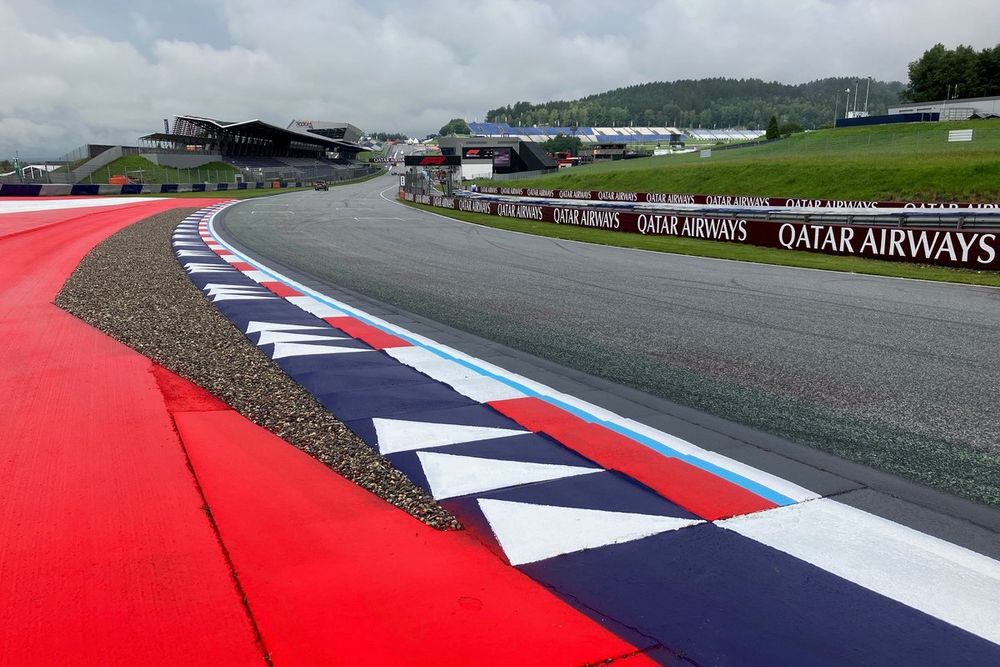
The FIA and the Austin race promoter are in discussions over installing adjustable gravel traps for Formula 1’s 2025 United States Grand Prix, Motorsport.com understands.
This approach is aimed at solving the track limits controversy involving Red Bull’s world champion Max Verstappen and McLaren driver Lando Norris that marred the end of last Sunday’s race at the Circuit of the Americas.
The Austin track had already made considerable effort to avoid further F1 track limits sagas during its recent major resurfacing work, following the 2023 race where Haas sought a right of review over track limits abuse it felt should have been sanctioned.
Turns 6, 13, 14 and 15 at Austin were narrowed, along with cameras installed to monitor track limits at various places, while Turn 11’s run-off was covered in a resin-bound ‘fake’ gravel-filled insert.
But the track did not install the small gravel trap solution the FIA has worked to develop for 2024 that was first installed at Austria’s Red Bull Ring and called the “perfect set-up” by F1 race director, Niels Wittich
This approach involves narrowing kerbs and painting white lines to ensure cars cannot be run on these fully without going off track, but critically a small gravel track is installed behind a kerb to act as a deterrent to drivers really pushing track limits – with the whole aspect designed to be easy for tracks to revise when it comes to holding motorbike events that cannot have gravel for safety reasons.
Track detail with gravel traps
Photo by: Jon Noble

Motorsport.com understands that as part of its rollout of the removable gravel trap feature, all F1 tracks were asked to consider installing it at certain contentious corners.
The idea was therefore put to the Austin race organiser ahead of the 2024 event that ended with Norris dropping off the podium for overtaking Verstappen outside track limits at Turn 12 at the end of the track’s long main straight – where the Red Bull was also running off the road.
The pair had also clashed in a similar incident – albeit with Verstappen as the attacker the whole way through the move – at the first corner of the Austin race where they also both went off the road.
There was much discussion in the media over the idea of installing the adjustable gravel traps used at the Red Bull Ring as a solution for Turn 1 and 12 at Austin in the immediate aftermath of last weekend’s race.
Max Verstappen, Red Bull Racing RB20, Lando Norris, McLaren MCL38, battle into turn 1, as Charles Leclerc, Ferrari SF-24 overtakes Carlos Sainz, Ferrari SF-24
Photo by: Steve Etherington / Motorsport Images
Motorsport.com understands that the FIA has again raised the idea with the Austin promoter following the race’s controversial ending.
However, it only has the power to force circuits to make such design changes on safety grounds, which, given the current saga focuses on sporting clashes, this does not cover.
Austin also must consider how any gravel traps might impact safety at the MotoGP event it has hosted since 2013 and the adjustable gravel traps solution is also understood to come with considerable extra cost to any track that wants to install them.
COTA boss Bobby Epstein had said ahead of this year’s US GP that the adjustable gravel trap solution was not suitable for the Texas venue at this stage.
“You can’t have both,” he said. “You can’t cut into the track and put in gravel, then flip it back and hope it stays watertight when you have clay underneath it.
“So, there’s some back-and-forth challenges to it.”
Pedro Acosta, Red Bull GASGAS Tech3
Photo by: Gold and Goose / Motorsport Images

This topic was also much discussed ahead of this weekend’s race in Mexico, where the F1 drivers had to field many questions about the Verstappen/Norris incidents on the event’s media day.
Mercedes driver George Russell said: “For me, the root cause of the problem is having a circuit that allows you to run wide.
“And if we take Austria last year as an example, you had, I don’t know, 300 track limit problems. They put gravel in, and there’s no problems.
“If you put gravel in on that corner [Turn 12 at Austin], Lando doesn’t go off and overtake, and Max doesn’t break that late and go off as well. So, I think we need to tackle the root cause.”
COTA has been approached for comment on this article.
-

 Science & Environment1 month ago
Science & Environment1 month agoHow to unsnarl a tangle of threads, according to physics
-

 Technology4 weeks ago
Technology4 weeks agoIs sharing your smartphone PIN part of a healthy relationship?
-

 Science & Environment1 month ago
Science & Environment1 month agoHyperelastic gel is one of the stretchiest materials known to science
-

 Science & Environment1 month ago
Science & Environment1 month ago‘Running of the bulls’ festival crowds move like charged particles
-

 Science & Environment1 month ago
Science & Environment1 month agoMaxwell’s demon charges quantum batteries inside of a quantum computer
-

 Technology1 month ago
Technology1 month agoWould-be reality TV contestants ‘not looking real’
-

 Science & Environment1 month ago
Science & Environment1 month agoX-rays reveal half-billion-year-old insect ancestor
-

 Science & Environment1 month ago
Science & Environment1 month agoSunlight-trapping device can generate temperatures over 1000°C
-

 Science & Environment1 month ago
Science & Environment1 month agoLiquid crystals could improve quantum communication devices
-

 Technology4 weeks ago
Technology4 weeks agoUkraine is using AI to manage the removal of Russian landmines
-

 TV3 weeks ago
TV3 weeks agoসারাদেশে দিনব্যাপী বৃষ্টির পূর্বাভাস; সমুদ্রবন্দরে ৩ নম্বর সংকেত | Weather Today | Jamuna TV
-

 Science & Environment1 month ago
Science & Environment1 month agoQuantum ‘supersolid’ matter stirred using magnets
-

 News3 weeks ago
News3 weeks agoMassive blasts in Beirut after renewed Israeli air strikes
-

 Technology3 weeks ago
Technology3 weeks agoSamsung Passkeys will work with Samsung’s smart home devices
-

 Football3 weeks ago
Football3 weeks agoRangers & Celtic ready for first SWPL derby showdown
-

 News3 weeks ago
News3 weeks agoNavigating the News Void: Opportunities for Revitalization
-

 Science & Environment1 month ago
Science & Environment1 month agoLaser helps turn an electron into a coil of mass and charge
-

 Science & Environment1 month ago
Science & Environment1 month agoA new kind of experiment at the Large Hadron Collider could unravel quantum reality
-

 Womens Workouts1 month ago
Womens Workouts1 month ago3 Day Full Body Women’s Dumbbell Only Workout
-

 News3 weeks ago
News3 weeks ago▶ Hamas Spent $1B on Tunnels Instead of Investing in a Future for Gaza’s People
-

 Business3 weeks ago
Business3 weeks agoWhen to tip and when not to tip
-

 Sport3 weeks ago
Sport3 weeks agoBoxing: World champion Nick Ball set for Liverpool homecoming against Ronny Rios
-

 MMA3 weeks ago
MMA3 weeks ago‘Uncrowned queen’ Kayla Harrison tastes blood, wants UFC title run
-

 Science & Environment1 month ago
Science & Environment1 month agoPhysicists have worked out how to melt any material
-

 Science & Environment1 month ago
Science & Environment1 month agoWhy this is a golden age for life to thrive across the universe
-

 Science & Environment1 month ago
Science & Environment1 month agoQuantum forces used to automatically assemble tiny device
-

 Technology4 weeks ago
Technology4 weeks agoMicrophone made of atom-thick graphene could be used in smartphones
-

 MMA3 weeks ago
MMA3 weeks agoPereira vs. Rountree prediction: Champ chases legend status
-

 News3 weeks ago
News3 weeks ago‘Blacks for Trump’ and Pennsylvania progressives play for undecided voters
-

 Sport3 weeks ago
Sport3 weeks agoMan City ask for Premier League season to be DELAYED as Pep Guardiola escalates fixture pile-up row
-

 MMA3 weeks ago
MMA3 weeks agoDana White’s Contender Series 74 recap, analysis, winner grades
-
Business3 weeks ago
DoJ accuses Donald Trump of ‘private criminal effort’ to overturn 2020 election
-

 Technology3 weeks ago
Technology3 weeks agoThis AI video generator can melt, crush, blow up, or turn anything into cake
-

 Football3 weeks ago
Football3 weeks agoWhy does Prince William support Aston Villa?
-

 Sport3 weeks ago
Sport3 weeks agoWales fall to second loss of WXV against Italy
-

 News1 month ago
News1 month ago▶️ Hamas in the West Bank: Rising Support and Deadly Attacks You Might Not Know About
-

 Technology1 month ago
Technology1 month agoMeta has a major opportunity to win the AI hardware race
-

 Technology4 weeks ago
Technology4 weeks agoRussia is building ground-based kamikaze robots out of old hoverboards
-

 Science & Environment1 month ago
Science & Environment1 month agoITER: Is the world’s biggest fusion experiment dead after new delay to 2035?
-

 Science & Environment1 month ago
Science & Environment1 month agoA slight curve helps rocks make the biggest splash
-

 Science & Environment1 month ago
Science & Environment1 month agoNerve fibres in the brain could generate quantum entanglement
-

 Science & Environment1 month ago
Science & Environment1 month agoNuclear fusion experiment overcomes two key operating hurdles
-

 MMA3 weeks ago
MMA3 weeks agoJulianna Peña trashes Raquel Pennington’s behavior as champ
-

 Sport3 weeks ago
Sport3 weeks agoAaron Ramsdale: Southampton goalkeeper left Arsenal for more game time
-

 Technology3 weeks ago
Technology3 weeks agoGmail gets redesigned summary cards with more data & features
-

 Technology3 weeks ago
Technology3 weeks agoMusk faces SEC questions over X takeover
-

 Science & Environment1 month ago
Science & Environment1 month agoHow to wrap your mind around the real multiverse
-

 Science & Environment1 month ago
Science & Environment1 month agoTime travel sci-fi novel is a rip-roaringly good thought experiment
-

 Technology1 month ago
Technology1 month agoWhy Machines Learn: A clever primer makes sense of what makes AI possible
-

 Technology3 weeks ago
Technology3 weeks agoMicrosoft just dropped Drasi, and it could change how we handle big data
-

 Sport3 weeks ago
Sport3 weeks agoSturm Graz: How Austrians ended Red Bull’s title dominance
-

 News3 weeks ago
News3 weeks agoFamily plans to honor hurricane victim using logs from fallen tree that killed him
-

 Entertainment3 weeks ago
Entertainment3 weeks agoNew documentary explores actor Christopher Reeve’s life and legacy
-

 Sport3 weeks ago
Sport3 weeks agoChina Open: Carlos Alcaraz recovers to beat Jannik Sinner in dramatic final
-

 Money3 weeks ago
Money3 weeks agoWetherspoons issues update on closures – see the full list of five still at risk and 26 gone for good
-

 Technology3 weeks ago
Technology3 weeks agoThe best budget robot vacuums for 2024
-

 MMA3 weeks ago
MMA3 weeks agoKetlen Vieira vs. Kayla Harrison pick, start time, odds: UFC 307
-

 News1 month ago
News1 month ago▶️ Media Bias: How They Spin Attack on Hezbollah and Ignore the Reality
-

 News3 weeks ago
News3 weeks agoWoman who died of cancer ‘was misdiagnosed on phone call with GP’
-
Business3 weeks ago
Sterling slides after Bailey says BoE could be ‘a bit more aggressive’ on rates
-
Business3 weeks ago
The search for Japan’s ‘lost’ art
-

 Business3 weeks ago
Business3 weeks agoStark difference in UK and Ireland’s budgets
-

 MMA3 weeks ago
MMA3 weeks agoPereira vs. Rountree preview show live stream
-

 Sport3 weeks ago
Sport3 weeks ago2024 ICC Women’s T20 World Cup: Pakistan beat Sri Lanka
-

 Sport3 weeks ago
Sport3 weeks agoCoco Gauff stages superb comeback to reach China Open final
-

 Sport4 weeks ago
Sport4 weeks agoWorld’s sexiest referee Claudia Romani shows off incredible figure in animal print bikini on South Beach
-

 Technology3 weeks ago
Technology3 weeks agoEpic Games CEO Tim Sweeney renews blast at ‘gatekeeper’ platform owners
-
Business3 weeks ago
Bank of England warns of ‘future stress’ from hedge fund bets against US Treasuries
-

 Science & Environment3 weeks ago
Science & Environment3 weeks agoMarkets watch for dangers of further escalation
-

 Business3 weeks ago
Business3 weeks agoChancellor Rachel Reeves says she needs to raise £20bn. How might she do it?
-

 Technology3 weeks ago
Technology3 weeks agoTexas is suing TikTok for allegedly violating its new child privacy law
-

 Technology3 weeks ago
Technology3 weeks agoOpenAI secured more billions, but there’s still capital left for other startups
-

 Technology3 weeks ago
Technology3 weeks agoThe best shows on Max (formerly HBO Max) right now
-

 MMA3 weeks ago
MMA3 weeks agoAlex Pereira faces ‘trap game’ vs. Khalil Rountree
-

 Football3 weeks ago
Football3 weeks agoSimo Valakari: New St Johnstone boss says Scotland special in his heart
-

 Technology3 weeks ago
Technology3 weeks agoJ.B. Hunt and UP.Labs launch venture lab to build logistics startups
-

 News3 weeks ago
News3 weeks agoGerman Car Company Declares Bankruptcy – 200 Employees Lose Their Jobs
-

 MMA3 weeks ago
MMA3 weeks agoUFC 307 preview show: Will Alex Pereira’s wild ride continue, or does Khalil Rountree shock the world?
-

 MMA3 weeks ago
MMA3 weeks ago‘I was fighting on automatic pilot’ at UFC 306
-
News1 month ago
the pick of new debut fiction
-

 News1 month ago
News1 month agoOur millionaire neighbour blocks us from using public footpath & screams at us in street.. it’s like living in a WARZONE – WordupNews
-

 News3 weeks ago
News3 weeks agoLiverpool secure win over Bologna on a night that shows this format might work
-

 News3 weeks ago
News3 weeks agoHull KR 10-8 Warrington Wolves – Robins reach first Super League Grand Final
-
Business3 weeks ago
Head of UK Competition Appeal Tribunal to step down after rebuke for serious misconduct
-

 Money3 weeks ago
Money3 weeks agoPub selling Britain’s ‘CHEAPEST’ pints for just £2.60 – but you’ll have to follow super-strict rules to get in
-

 News3 weeks ago
News3 weeks agoBalancing India and China Is the Challenge for Sri Lanka’s Dissanayake
-

 News3 weeks ago
News3 weeks agoHeavy strikes shake Beirut as Israel expands Lebanon campaign
-

 TV3 weeks ago
TV3 weeks agoLove Island star sparks feud rumours as one Islander is missing from glam girls’ night
-

 TV3 weeks ago
TV3 weeks agoPhillip Schofield accidentally sets his camp on FIRE after using emergency radio to Channel 5 crew
-

 News3 weeks ago
News3 weeks agoHeartbreaking end to search as body of influencer, 27, found after yacht party shipwreck on ‘Devil’s Throat’ coastline
-
Politics3 weeks ago
Rosie Duffield’s savage departure raises difficult questions for Keir Starmer. He’d be foolish to ignore them | Gaby Hinsliff
-

 Technology3 weeks ago
Technology3 weeks agoPopular financial newsletter claims Roblox enables child sexual abuse
-

 Health & fitness3 weeks ago
Health & fitness3 weeks agoNHS surgeon who couldn’t find his scalpel cut patient’s chest open with the penknife he used to slice up his lunch
-

 Technology3 weeks ago
Technology3 weeks agoIf you’ve ever considered smart glasses, this Amazon deal is for you
-

 Technology3 weeks ago
Technology3 weeks agoAmazon’s Ring just doubled the price of its alarm monitoring service for grandfathered customers
-

 Technology3 weeks ago
Technology3 weeks agoApple iPhone 16 Plus vs Samsung Galaxy S24+
-

 TV3 weeks ago
TV3 weeks agoMaayavi (මායාවී) | Episode 23 | 02nd October 2024 | Sirasa TV
-

 Technology3 weeks ago
Technology3 weeks agoHow to disable Google Assistant on your Pixel Watch 3
-

 News3 weeks ago
News3 weeks agoReach CEO Jim Mullen: If government advertises with us, we’ll employ more reporters
-

 News3 weeks ago
News3 weeks agoSpongerla Rayner’s gift gluttony is worse than Free Gear Keir’s – her freeloading has destroyed working class reputation

You must be logged in to post a comment Login